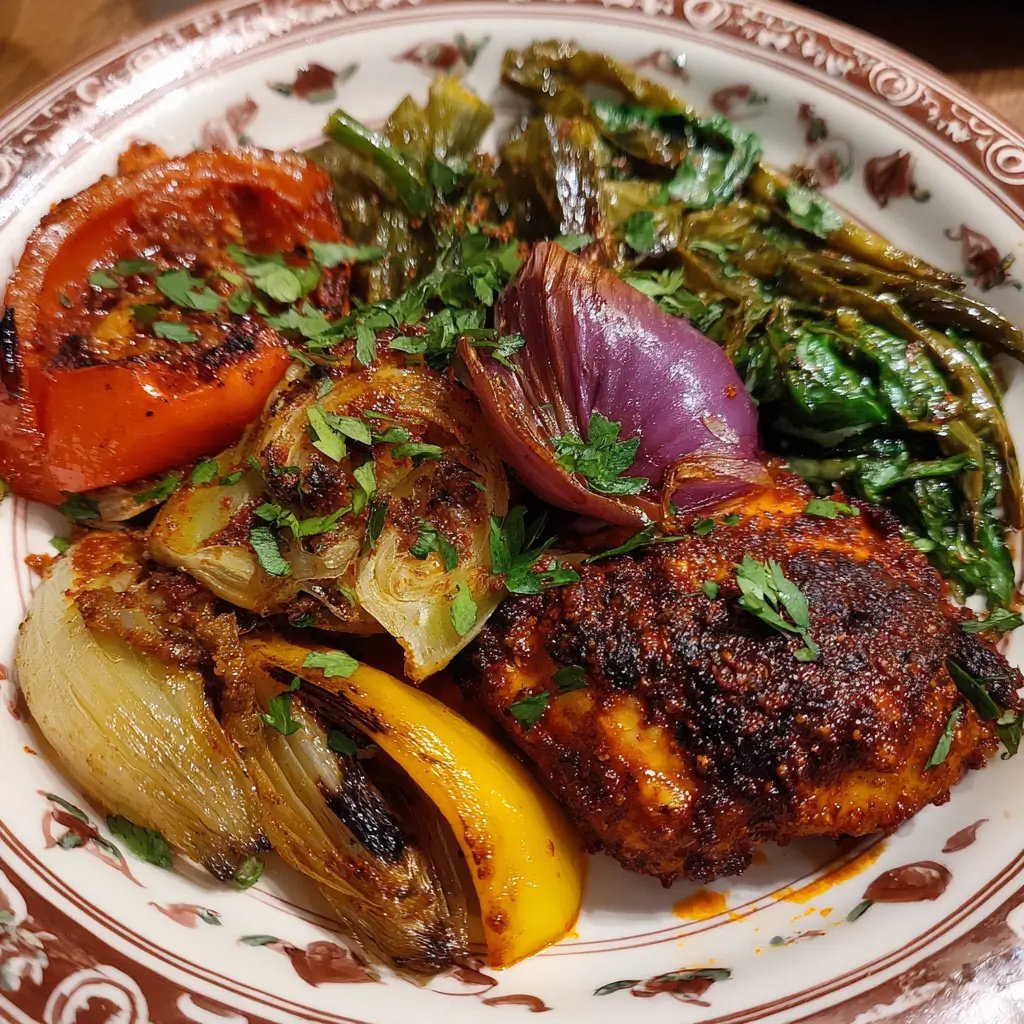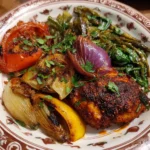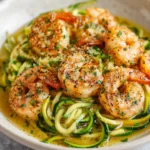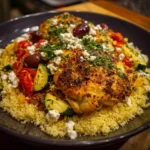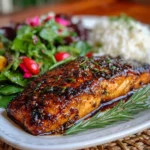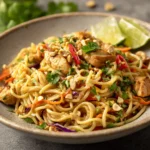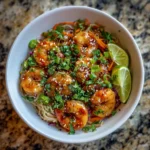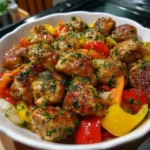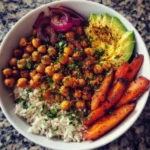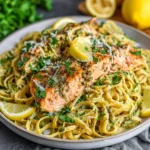Spicy Harissa Chicken with Vegetables: A Flavorful Mediterranean Delight
If you’re searching for a dish that combines bold North African flavors with vibrant, healthy vegetables and tender chicken, look no further than Spicy Harissa Chicken with Vegetables. This aromatic one-pan meal brings together the fiery warmth of harissa paste with succulent chicken thighs and a colorful medley of roasted vegetables. Whether you’re preparing a weeknight dinner or impressing guests at a weekend gathering, this recipe offers an explosion of flavor, texture, and nutrition in every bite. It’s not only easy to prepare but also incredibly versatile, allowing you to adapt it to your taste preferences, dietary needs, and seasonal produce.
The History of Harissa and Its Culinary Roots
Harissa originates from Tunisia, where it has been a staple condiment in North African cuisine for centuries. Traditionally made from roasted red peppers, hot chili peppers, garlic, olive oil, and a blend of spices such as cumin, coriander, and caraway, harissa serves as both a seasoning and a sauce. The word “harissa” comes from the Arabic verb harasa, meaning “to pound” or “to crush,” which refers to the traditional method of grinding ingredients into a thick paste using a mortar and pestle.
Over time, harissa has spread across North Africa and the Middle East, influencing dishes in Libya, Algeria, Morocco, and even parts of southern Europe, especially in regions like Sicily with historical trade ties to North Africa. In modern kitchens, harissa has gained international acclaim as a dynamic ingredient that adds depth, heat, and complexity to meats, stews, grains, and vegetable dishes. When paired with chicken and roasted vegetables, harissa transforms a simple meal into something exotic and deeply satisfying.
Ingredients Breakdown: What Makes This Dish Shine
The magic of Spicy Harissa Chicken with Vegetables lies in its thoughtfully chosen ingredients, each contributing to the overall harmony of flavor, color, and nutrition. Let’s break them down:
- Chicken Thighs (Boneless, Skin-on or Skinless): Preferred over breast meat for their juiciness and ability to absorb bold flavors without drying out during roasting.
- Harissa Paste: The star ingredient. Available in mild, medium, or hot varieties, this smoky, spicy paste provides the signature kick. You can use store-bought or make your own from dried chilies, garlic, and spices.
- Olive Oil: Extra virgin olive oil enhances moisture, helps crisp the chicken skin, and carries the fat-soluble flavors of the spices.
- Garlic: Fresh minced garlic adds pungency and depth, complementing the earthy notes in harissa.
- Lemon Juice: Brightens the dish, cutting through the richness and balancing the heat.
- Honey or Maple Syrup (Optional): A touch of sweetness tempers the spice and promotes caramelization.
- Smoked Paprika: Enhances the smokiness already present in harissa, adding another layer of complexity.
- Cumin and Coriander: Warm, earthy spices that are integral to North African cooking.
- Vegetables: Typically include bell peppers (red, yellow, orange), zucchini, eggplant, red onion, cherry tomatoes, and carrots. These offer natural sweetness, texture contrast, and vibrant colors.
- Fresh Herbs: Cilantro or parsley, used as a garnish, add freshness and a pop of green.
- Salt and Black Pepper: Essential seasonings that elevate all other flavors.
Step-by-Step Recipe: How to Make Spicy Harissa Chicken with Vegetables
This recipe is designed for simplicity and maximum flavor, using just one large baking sheet or roasting pan for easy cleanup.
Preparation Time:
15 minutes
Cooking Time:
35–40 minutes
Servings:
4–6 people
Ingredients:
- 1.5 lbs (700g) boneless, skin-on chicken thighs (or skinless if preferred)
- 3 tablespoons harissa paste (adjust to taste)
- 3 tablespoons extra virgin olive oil (divided)
- 4 cloves garlic, minced
- 1 tablespoon lemon juice (from about half a lemon)
- 1 teaspoon smoked paprika
- 1 teaspoon ground cumin
- ½ teaspoon ground coriander
- 1 tablespoon honey (optional, for balance)
- Salt and freshly ground black pepper, to taste
- 1 red bell pepper, sliced into strips
- 1 yellow bell pepper, sliced
- 1 medium zucchini, halved lengthwise and sliced
- 1 small eggplant, cubed
- 1 red onion, cut into wedges
- 1 cup cherry tomatoes
- 2 medium carrots, sliced on the diagonal
- ¼ cup fresh cilantro or flat-leaf parsley, chopped (for garnish)
Directions:
- Preheat the oven to 400°F (200°C). Line a large rimmed baking sheet with parchment paper or lightly grease it to prevent sticking.
- Prepare the marinade: In a large bowl, combine 2 tablespoons olive oil, harissa paste, minced garlic, lemon juice, smoked paprika, cumin, coriander, honey (if using), salt, and pepper. Mix well until smooth.
- Marinate the chicken: Add the chicken thighs to the bowl and toss thoroughly to coat each piece. Allow to marinate for at least 15–20 minutes (or up to 4 hours in the refrigerator for deeper flavor).
- Prepare the vegetables: In another large bowl, toss the bell peppers, zucchini, eggplant, red onion, cherry tomatoes, and carrots with the remaining 1 tablespoon olive oil, a pinch of salt, and a dash of black pepper.
- Arrange on baking sheet: Spread the vegetables evenly across the prepared baking sheet in a single layer. Place the marinated chicken thighs on top, spacing them evenly so they roast rather than steam.
- Raise the heat (optional for crispier skin): Roast at 400°F for 25 minutes, then increase the oven temperature to 425°F (220°C) and continue roasting for another 10–15 minutes, or until the chicken reaches an internal temperature of 165°F (74°C) and the vegetables are tender and slightly caramelized.
- Broil for finish (optional): For extra browning, switch the oven to broil for 2–3 minutes at the end—watch carefully to avoid burning.
- Garnish and serve: Remove from oven and let rest for 5 minutes. Sprinkle generously with fresh cilantro or parsley before serving.
Tips for Perfect Spicy Harissa Chicken Every Time
- Don’t overcrowd the pan: Ensure space between chicken and vegetables for proper air circulation, which promotes even roasting and browning.
- Use skin-on chicken: The skin crisps beautifully and protects the meat from drying out, though skinless works fine too.
- Adjust harissa level: Start with 1–2 tablespoons if you’re sensitive to spice. You can always serve extra harissa on the side.
- Add citrus zest: Grated lemon or orange zest in the marinade intensifies the brightness.
- Roast on a rack: For even crispier chicken, place a wire rack on the baking sheet and arrange chicken and veggies on top.
- Let chicken rest: Resting after cooking allows juices to redistribute, ensuring moist, flavorful meat.
- Double the batch: This dish reheats well and makes excellent leftovers for lunches or meal prep.
Variations and Customizations
This recipe is highly adaptable. Here are some creative twists to suit different diets and palates:
- Vegetarian/Vegan Version: Replace chicken with chickpeas, tofu, or tempeh. Use maple syrup instead of honey and ensure harissa is vegan (some brands contain dairy).
- Low-Carb/Keto: Focus on low-carb vegetables like zucchini, bell peppers, eggplant, broccoli, and mushrooms. Omit carrots and tomatoes if needed.
- Sheet Pan Swap: Try sweet potatoes, cauliflower, or Brussels sprouts for a heartier feel.
- Grilled Option: Marinate chicken and vegetables, then grill on skewers or a grill basket for a smoky outdoor flavor.
- With Grains: Serve over couscous, quinoa, bulgur, or rice pilaf to soak up the flavorful juices.
- Dairy Addition: Crumble feta or goat cheese over the finished dish for a creamy contrast.
- Extra Heat: Add diced jalapeños or a pinch of cayenne to the marinade for more fire.
- Preserved Lemon Twist: Chop preserved lemon rind and mix into the vegetables for a tangy, fermented note typical in Moroccan cuisine.
Health Considerations and Nutritional Value
Spicy Harissa Chicken with Vegetables isn’t just delicious—it’s also packed with nutrients that support a balanced diet.
- Lean Protein: Chicken thighs, while slightly higher in fat than breasts, provide satiating protein and essential amino acids. They’re rich in iron, zinc, and B vitamins, particularly B6 and B12.
- Heart-Healthy Fats: Olive oil contributes monounsaturated fats, known to support cardiovascular health and reduce inflammation.
- Antioxidant-Rich Vegetables: Bell peppers (especially red) are high in vitamin C and beta-carotene. Eggplant contains nasunin, an antioxidant that supports brain health. Zucchini offers hydration and fiber. Tomatoes provide lycopene, a powerful antioxidant linked to reduced cancer risk.
- Spice Benefits: Capsaicin in chili peppers (a key component of harissa) may boost metabolism, reduce appetite, and have anti-inflammatory properties.
- Fiber and Digestive Health: The wide variety of vegetables ensures a good intake of dietary fiber, promoting gut health and stable blood sugar levels.
- Low Added Sugar: When prepared without excess honey or syrups, this dish is naturally low in added sugars.
Nutritional Estimate (Per Serving, based on 4 servings):
- Calories: ~420–480 kcal
- Protein: 32g
- Fat: 28g (mostly unsaturated)
- Carbohydrates: 18g
- Fiber: 6g
- Sodium: Varies (depends on harissa brand; avg 600–800mg)
Note: Sodium content can be controlled by choosing low-sodium harissa or making your own. Also, removing the skin reduces fat content slightly.
Frequently Asked Questions (FAQ)
Q: Can I use chicken breast instead of thighs?
A: Yes, but cook time may vary. Breasts are leaner and can dry out faster. Reduce roasting time to 20–25 minutes and check internal temperature early (165°F). Consider brining or basting to retain moisture.
Q: Is harissa very spicy?
A: It depends on the brand and type. Traditional Tunisian harissa is quite hot, but many commercial versions offer mild or medium heat. Always taste before adding and adjust accordingly.
Q: Can I make this ahead of time?
A: Absolutely! Marinate the chicken and chop the vegetables up to 24 hours in advance. Store separately in the fridge and roast when ready.
Q: How do I store leftovers?
A: Cool completely and store in airtight containers in the refrigerator for up to 4 days. Reheat in the oven or microwave. Freezing is possible for up to 3 months, though vegetables may soften upon thawing.
Q: Can I use frozen vegetables?
A: Not recommended. Frozen vegetables release excess water, leading to soggy results. Fresh or thawed-and-drained roasted veggies work best.
Q: What can I serve with this dish?
A: Excellent with couscous, quinoa, crusty bread, hummus, tzatziki, or a simple green salad with lemon vinaigrette.
Q: Is harissa gluten-free?
A: Most harissa pastes are naturally gluten-free, but always check labels for additives or cross-contamination if you have celiac disease.
Summary
Spicy Harissa Chicken with Vegetables is a vibrant, aromatic dish that brings the bold flavors of North Africa into your kitchen with ease. Packed with protein, fiber, and antioxidant-rich ingredients, it’s as nutritious as it is delicious.
